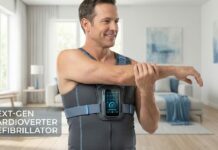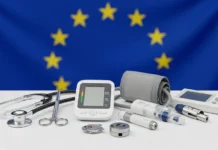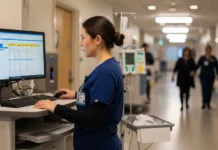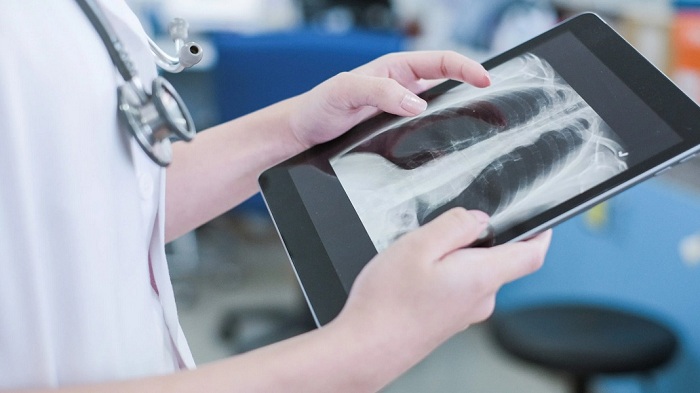Teleradiologists with varying levels of experience are highly accurate at diagnosing COVID-19 on chest CTs, according to a new multi-center study. It should give hospitals more confidence to deploy outsourced emergency reading during the pandemic.
That’s according to a large group of radiologists out of France, who compared remote reads performed by on-call experts to those completed by senior imaging physicians.
In more than 500 adults with confirmed COVID-19, telerads’ diagnoses were “highly” consistent with patients’ reverse transcription-polymerase chain-reaction (RT-PCR) testing results, the authors wrote Oct. 29 in European Radiology.
Senior rads also agreed with their remote peers in most instances, first author Hubert Nivet, with Imadis Teleradiology in Lyon, France, and colleagues noted.
While a majority of radiology societies do not recommend using CT as a first-line tool to screen patients for the novel virus, the authors believe their findings may serve as a template of sorts for emergency situations.
“Our results illustrate the high diagnostic accuracy … of teleradiologists with various degrees of experience, in settings with different levels of prevalence, as well as an excellent interobserver agreement for chest CT,” Nivet et al. added. “Thus, this kind of structured outsourced teleradiology model could [pair] high-quality structured and standardized reports with report turnaround time[s] meeting the requirements of emergency medicine during the pandemic.”
For their research, the group prospectively enrolled 513 patients who received both a chest CT and RT-PCR testing at one of 15 hospitals. Of that population, 244 (47.6%) came back with a lab test positive for COVID-19.
All scans were immediately read by on-call teleradiologists, which consisted of 106 senior rads and 45 junior radiologists, and then blind reviewed by a team of 15 senior radiologists. The study took place between March 13 and April 14.
Overall agreement between initial emergency interpretations and secondary reads was excellent, the authors noted (weighted kappa=0.87). Interpretations also correlated with lab testing results.
The study was limited by a number of factors, including variable COVID-19 prevalence rates between hospitals, the authors noted.
“Chest CT demonstrated high diagnostic accuracy with strong interobserver agreement between on-call teleradiologists with varying degrees of experience and senior radiologists over the study period,” Nivet and colleagues concluded.


















